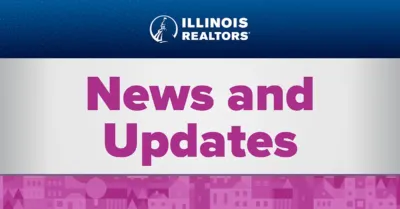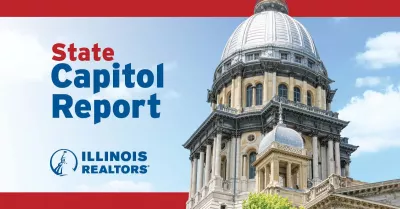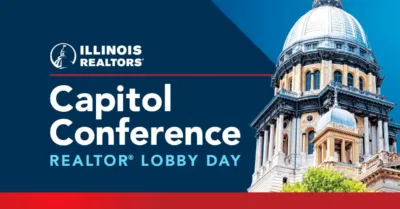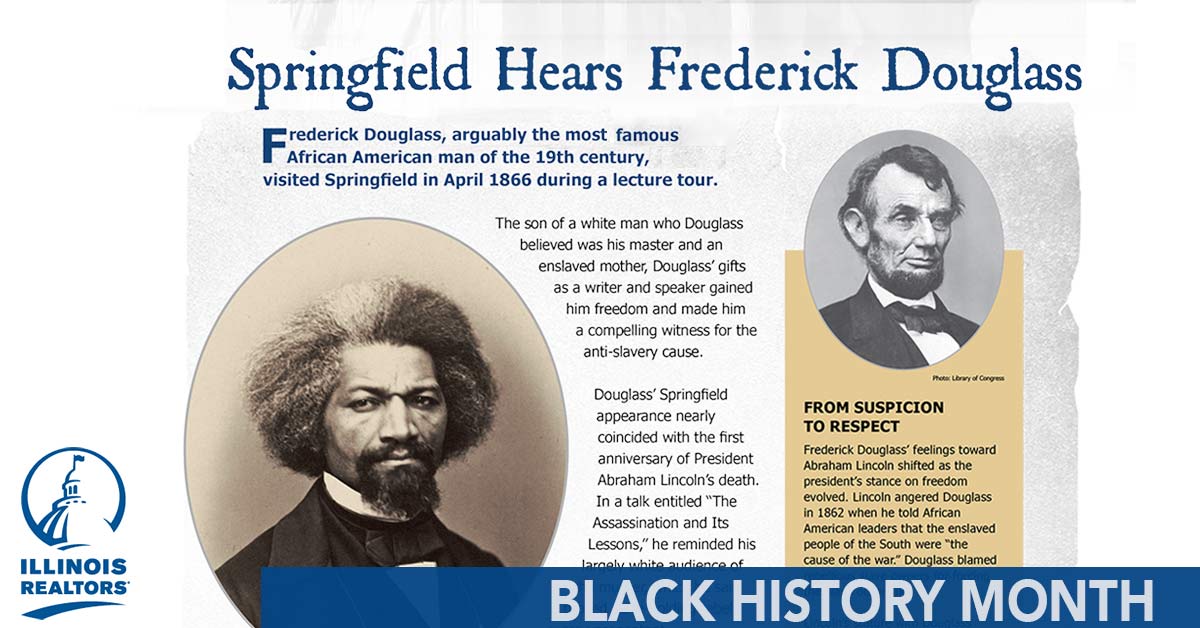If you’ve visited Illinois REALTORS® headquarters in Springfield then perhaps you’ve walked along Bicentennial Plaza, a REALTOR® Community Partnership.
This pedestrian walkway was dedicated on Aug. 26, 2018, the 200th anniversary of the Illinois’ Constitution. It was a Signature Legacy Project of the state’s bicentennial celebration, and is dedicated to Abraham Lincoln’s vision for America as a country with opportunity and equality for all.
Bicentennial Plaza is bordered by 16 interpretive panels which tell of Springfield events and the people who shaped them, all of which worked toward Lincoln’s goal “to afford all, an enfettered start, and a fair chance, in the race of life.”
One panel focuses on the 19th century’s eminent human rights leader Frederick Douglass, who was born into slavery but became a leader in the movement to abolish slavery.
Douglass visited Springfield in April 1866 during a lecture tour, almost exactly a year after Lincoln’s assassination. In his talk “The Assassination and Its Lessons,” Douglass reminded a largely white audience of Lincoln’s murder, which he said proved slave-holding rebels were unrepentant.
According to Illinois historians who researched and developed the panel series, “Frederick Douglass’ feelings toward Abraham Lincoln shifted as the president’s stance on freedom evolved.”
From the panel titled “Springfield Hears Frederick Douglass”:
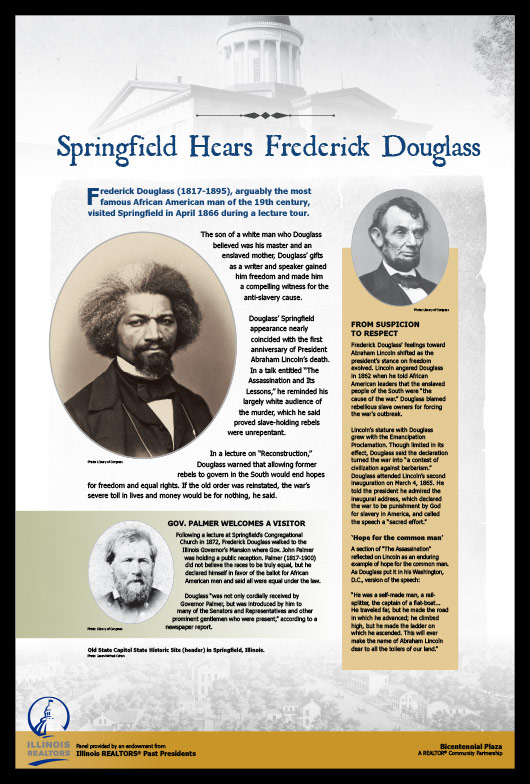 Lincoln angered Douglass in 1862 when he told African American leaders that the enslaved people of the South were “the cause of the war.” Douglass blamed rebellious slave owners for forcing the war’s outbreak.
Lincoln angered Douglass in 1862 when he told African American leaders that the enslaved people of the South were “the cause of the war.” Douglass blamed rebellious slave owners for forcing the war’s outbreak.
Lincoln’s stature with Douglass grew with the Emancipation Proclamation. Though limited in its effect, Douglass said the declaration turned the war into “a contest of civilization against barbarism.”
Douglass attended Lincoln’s second inauguration on March 4, 1865. He told the president he admired the inaugural address, which declared the war to be punishment by God for slavery in America, and called the speech a “sacred effort.”
Douglass went on to hold several U.S. government positions after the Civil War, ultimately serving under five presidents.
Learn more about Frederick Douglass from the Library of Congress and National Park Service. See the Bicentennial Plaza panels online and on your next visit to Springfield.



